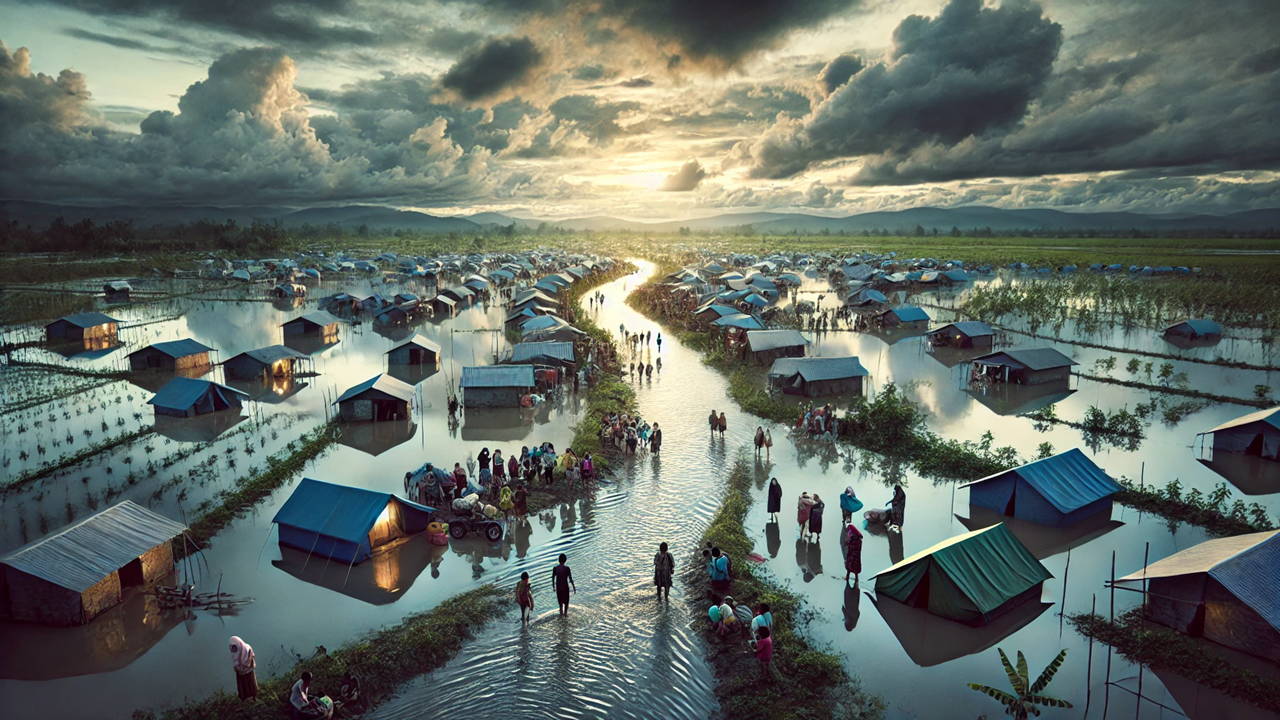Financing Solutions for Climate Displacement: A Roadmap for Asia and the Pacific
As climate change continues to displace millions in Asia and the Pacific, a new report underscores the need for governments and multilateral development banks (MDBs) to take proactive measures. The report "Harnessing Development Financing for Solutions to Displacement in the Context of Disasters and Climate Change in Asia and the Pacific" explains how incorporating development financing can help reduce displacement and foster long-term resilience. By mobilizing global climate funds and adopting sustainable solutions, MDBs can help governments create climate-adapted infrastructure, improve socioeconomic stability, and ensure affected populations are better equipped to face future disasters.

Millions of people in Asia and the Pacific are increasingly facing displacement due to climate change and related disasters, a challenge that is reshaping communities, economies, and environments across the region. The report titled "Harnessing Development Financing for Solutions to Displacement in the Context of Disasters and Climate Change in Asia and the Pacific" offers a crucial examination of how development financing can be key to tackling this urgent challenge. With 177 million internal displacements in the region between 2014 and 2023 alone, largely driven by climate-related events, the need for action has never been more urgent.
The report, produced by the Asian Development Bank (ADB) and the Internal Displacement Monitoring Centre (IDMC), highlights the essential role of multilateral development banks (MDBs) and government bodies in developing long-term strategies that go beyond immediate relief efforts. Here’s how development financing can be harnessed to mitigate displacement and foster resilient communities.
The Growing Scale of Displacement
Asia and the Pacific account for 74% of the global internal displacements, a staggering number that highlights the vulnerability of the region to weather-related disasters. From floods and storms to tropical cyclones, these events have forced millions from their homes, creating both immediate humanitarian crises and long-term socioeconomic challenges.
Displacement uproots entire communities, leading to widespread loss of livelihoods, disruption of education, and increased poverty. People who are forced to leave their homes often lose access to basic services like healthcare, schooling, and secure housing. This in turn reduces their ability to recover quickly, compounding poverty cycles. For governments and development agencies, addressing these challenges requires an urgent shift toward more sustainable solutions, focusing not just on short-term emergency responses but on building long-term resilience.
How MDBs Can Lead the Way
The role of MDBs is crucial in addressing displacement at its roots. By supporting governments with the right financial tools, MDBs can help countries integrate displacement concerns into national development plans. This integration is key to ensuring that investments in disaster preparedness, climate adaptation, and infrastructure development are targeted toward the most vulnerable populations.
For instance, the report calls for leveraging global climate funds to develop climate-adapted infrastructure and promote resilience-building projects in areas prone to frequent disasters. Countries like Fiji have already set an example by developing relocation guidelines for communities that are highly vulnerable to climate change. Bangladesh, too, has implemented a comprehensive national strategy for internal displacement, which could serve as a model for other nations in the region.
MDBs are well-positioned to offer both financing and technical assistance. They can provide governments with the resources necessary to address displacement through evidence-based policies, ensuring that all strategies are informed by quality data and the active participation of affected communities. In addition, MDBs can facilitate the flow of climate funds to create projects that help prevent displacement and support communities before, during, and after climate disasters strike.
Shifting to Sustainable Solutions
One of the report's key messages is the need to shift from a purely humanitarian response to a more comprehensive, development-focused strategy. Humanitarian aid, while critical in the immediate aftermath of a disaster, does little to address the long-term vulnerabilities that drive displacement. This is where development financing becomes vital.
By investing in climate-resilient infrastructure—such as flood defenses, stormwater drainage systems, and housing designed to withstand extreme weather—MDBs and governments can reduce the risk of displacement. Furthermore, projects that improve livelihoods, health services, and education systems in disaster-prone areas can provide communities with the tools they need to adapt to changing environmental conditions.
Building community resilience through development planning ensures that displaced populations are better equipped to either return to their homes or integrate into new environments. The report stresses that sustainable solutions should include the active participation of the affected populations, as local communities are best placed to identify the most effective ways to address their challenges.
A Collaborative Effort for a Sustainable Future
Ultimately, addressing climate-induced displacement requires coordinated efforts between governments, MDBs, and the global community. The report emphasizes that financial resources must be mobilized strategically to maximize their impact. MDBs are encouraged to foster partnerships with governments and local communities to implement long-term, scalable solutions that not only mitigate displacement but also strengthen overall resilience to climate change.
As climate change continues to pose an existential threat to millions in Asia and the Pacific, it is clear that the region needs more than just emergency relief. It needs sustainable solutions backed by development financing that can create lasting change for displaced populations and the communities that host them. The roadmap provided by this report offers a path forward—one where financial investments can help safeguard the future of the region’s most vulnerable.
- FIRST PUBLISHED IN:
- Devdiscourse










